Bottom line recommendation
Before you pull the trigger on a random SI1 diamond, let’s narrow down your options by answering the following questions:
Are you buying a natural diamond or a lab-grown diamond?
Since lab-grown diamonds are much more affordable, the price difference between SI1 and VS2 can sometimes be as little as $50; there is no reason to compromise it. Just go for VS2 minimum. Natural diamonds are a whole different story. Ask yourself what is your dream carat weight, and aim for a realistic carat mark based on your budget. Based on that, check if you can reach the carat mark and a VS2 diamond. If not, the answer is simple, you’ll have to compromise over clarity and look for a nice SI1 diamond.
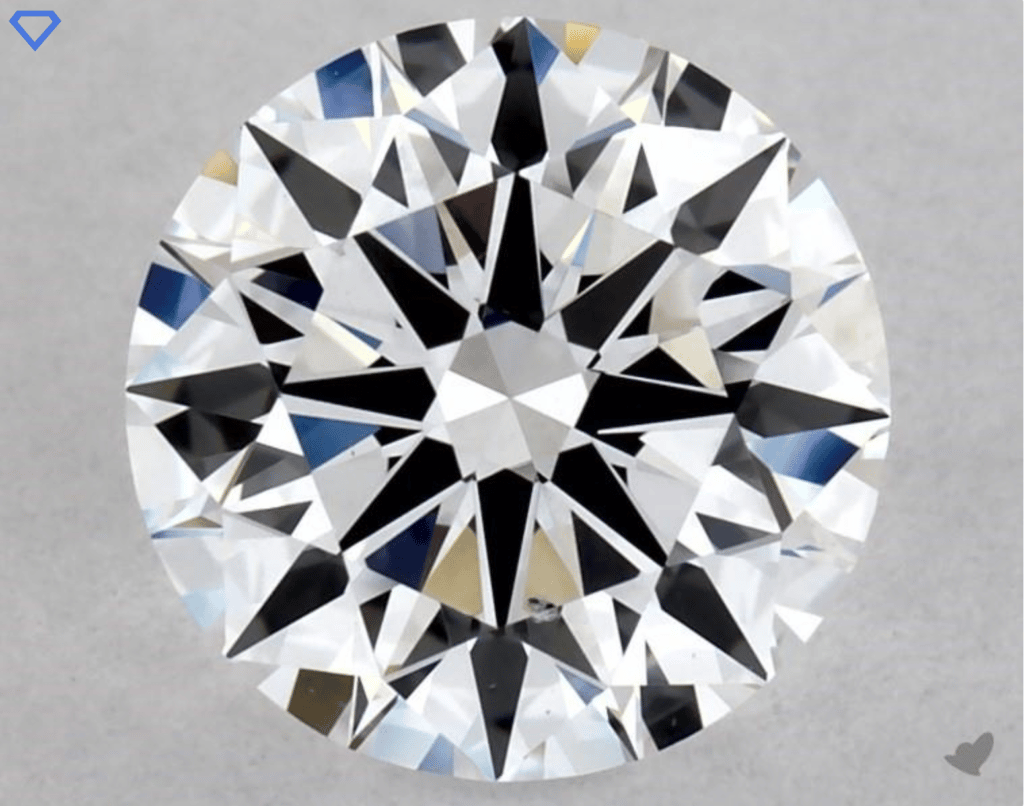
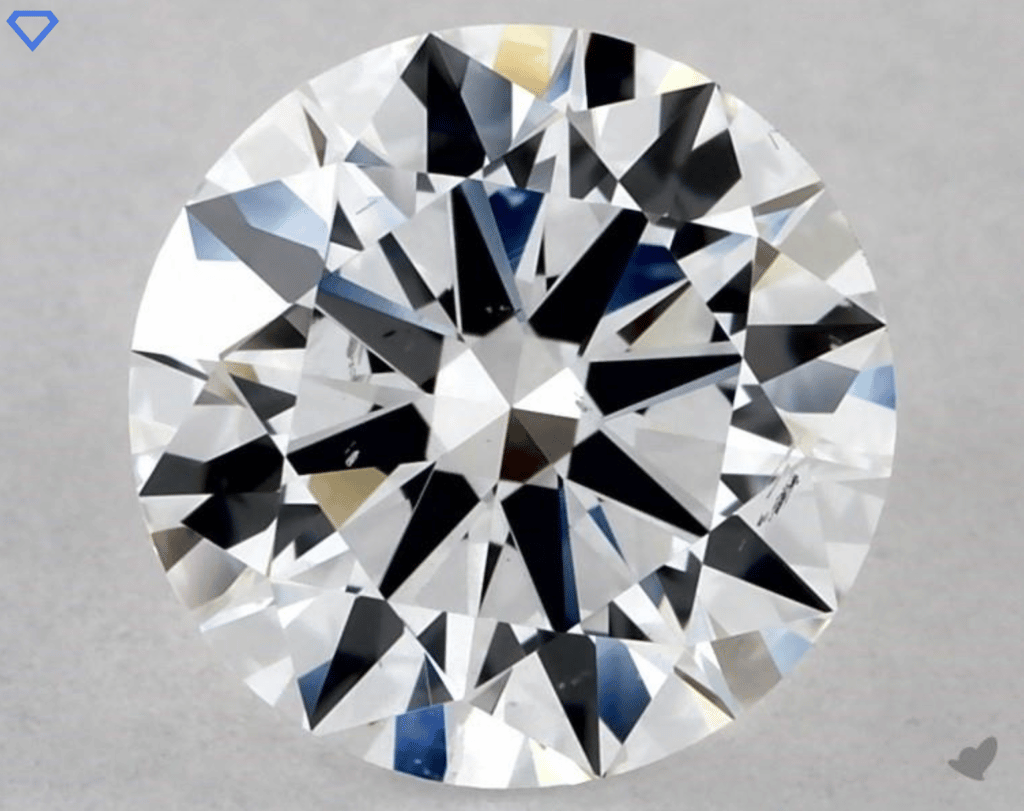
Budget
Buying on a tight budget is a good reason to compromise over clarity. An eye-clean SI1 diamond would appear as clean as higher clarity grades to the naked eye. This way, you can save a lot of money on clarity, and invest it on other factors, such as carat, cut, and color.
I’d say there are three types of customers:
- Shopping around: If you like to shop around and look for the best deal while saving as much money as possible, take your time and find an excellent eye-clean SI1 diamond.
- Fast buyer: Just want to finish with this? Don’t enjoy the market research? A VS2 clarity would be the ideal grade for you. You can be confident that you got a clean diamond. If you have enough budget, it’s worth the peace of mind.
- Looking for a premium diamond: It’s straightforward. SI diamonds are not premium. You probably need a VS1 diamond and higher.
My top picks for SI1
Deal Alerts!
RECOMMENDED RELIABLE SELLERS ONLY.
Up to 50% OFF Selected Jewelry at Blue Nile
Instant $100 off when signing up + 3% discount on wire transfer at Whiteflash
Table of Contents
SI diamonds are very popular, especially if you want a larger diamond. But are they any good? What does SI mean exactly? What are the risks? In this article, I will explain everything you need to know about SI diamonds. After reading this, you’ll be able to decide if they are the right choice for you.
Let’s start!
What are SI diamonds?
The term “SI” is an acronym for “slightly included” and describes diamonds with easily noticeable inclusions and blemishes under magnification. These diamonds are located at the low end of the clarity scale. However, it doesn’t necessarily mean that the diamond is low-quality or not beautiful to the naked eye. In fact, by doing good market research, you can find SI diamonds with overall excellent quality. The inclusions in these stones are often tiny and don’t affect the overall beauty of the diamond. Such a diamond is called “eye-clean,” meaning we cannot see the flaws with the naked eye.
Depending on your budget, getting an eye-clean SI diamond has two main advantages:
- Finding an eye-clean SI diamond gives you the option to save some money.
- Compromising over clarity by finding an eye-clean SI diamond allows you to invest in a larger diamond.
Perfect SI1 diamond
What does SI mean in diamonds?
The SI clarity grade means the diamond carries slight inclusions relative to higher clarity grades. It can often affect the diamond’s beauty and be visible to the naked eye. In most cases, a flaw can be noticed with the help of a diamond loupe; however, if you can’t see the flaw, most likely that it still affects the diamond. Keep in mind there are many types of inclusions and blemishes. Each one looks different. We can sum it up into two groups:
- Lines and dots: Inclusions like crystal, grain, knot, pinpoint, and needle look like black and white lines, scratches, and dots inside the diamond. In general, it’s easier to spot those inclusions with the naked eye if they are located over the table of the diamond.
- Hazy appearance: Some flaws like cloud and feather can cause a hazy and milky appearance. It would be harder to spot them with the naked eye, yet, the diamond might look dull, with less brilliance and sparkles.
The size of the inclusion, and its location, affect the diamond’s clarity grade. The more and larger the inclusions, the lower the clarity grade. The types of SI1 and SI2 inclusions do vary. It can either be one large inclusion or several small ones.
Dirty SI1 diamond
The five diamond clarity factors by GIA
Size: A larger inclusion is naturally more noticeable. For that reason, it is more likely to get a lower clarity grade. And so is the opposite: The smaller or less prominent an inclusion, the higher the possible clarity grade.
Number: As the number of the characteristics gets higher, considering whether the flaws are visible or not, the diamond is more likely to receive a lower grade.
Position: The location of the inclusion determines whether we see it or not. In that matter, if a flaw is located over the table, it is more visible to the naked eye. It’s also important to understand that inclusions can reflect multiple times and affect the total appearance. For example, one black dot over the table can reflect itself and show many black dots all over the diamond. That being said, an inclusion located over the side facets can be hidden from the naked eye, and it’s completely safe.
Nature: This factor assesses whether the characteristic is internal (inside the diamond) or external (over the surface).
Color and Relief: This factor measures how noticeable the characteristic is and how it blends with the total appearance of the diamond.
Common SI1 diamond inclusions
Let’s talk about some of the most common inclusions:
Feather: A feather is a thin, delicate inclusion that typically appears as fine lines or feathers on the surface of the diamond. As a rule of thumb, I recommend avoiding it with SI diamonds.
Cloud: A cloud can be anything from a tiny dot to an amorphous mass. It usually causes no problems for diamonds with good clarity grades (VS2 and higher). Same as a feather, as a rule of thumb, I recommend avoiding it with SI diamonds.
Needles: Needles are slender threads that may appear bent or curved in relief across the top of facets or down their side faces.
Pinpoint: A pinpoint is a tiny inclusion that appears as a little black dot on the surface of the diamond.
Twinning wisp: A series of pinpoints or a wisp of twisting needle-like inclusions usually caused by the diamond’s crystallization process.
Grain: A grain is a tiny crystal inclusion that appears like a slim gray line on the surface of the diamond.
Cavity: An angular opening is formed when a feather breaks away or a surface-reaching crystal pops out or is forced out during the diamond polishing process.
Chip: A gap in the stone’s surface caused by damage at a girdle edge, facet junction, or culet.
Intended natural: A part of the rough diamond’s original surface left unpolished.
SI2 vs. SI1 diamonds: How different are they?
If it’s hard to find an eye-clean SI1, you can imagine finding a clean SI2 is even more challenging. Still, it’s possible. As we would expect, an SI2 would have:
- Higher amount and type of inclusions
- Larger inclusions and blemishes
- Inclusions that are located over the center of the diamond
This is important because it will affect the diamond’s look and overall value.
SI1 diamonds tend to have fewer inclusions than SI2 diamonds and are also less likely to have inclusions that will affect the diamond’s brilliance. If possible, I recommend going with SI1 as a minimum clarity grade.
Is SI1 diamond eye-clean?
To get an idea of how a diamond appears, you should check out the clarity grades. However, the most important thing is finding a diamond with an “eye-clean” appearance.
Inclusions and blemishes or imperfections occur inside the diamond during its formation process. They can also be tiny fractures that occur on the diamond’s surface. What we mean by an eye-clean diamond is a diamond with no visible inclusions to the naked eye, no matter where they are located.
Non eye-clean diamond: 1.03 Carat G-SI2 ($5,270)
Eye-clean diamond: 1.08 Carat H-SI2 ($5,220)
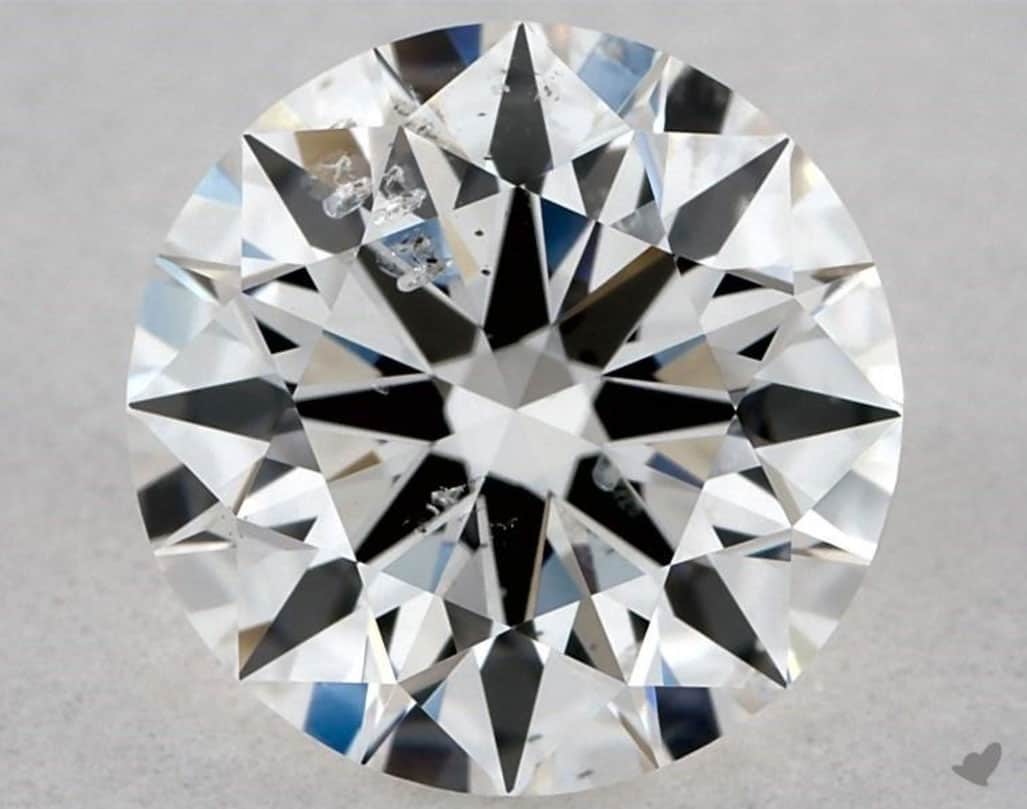
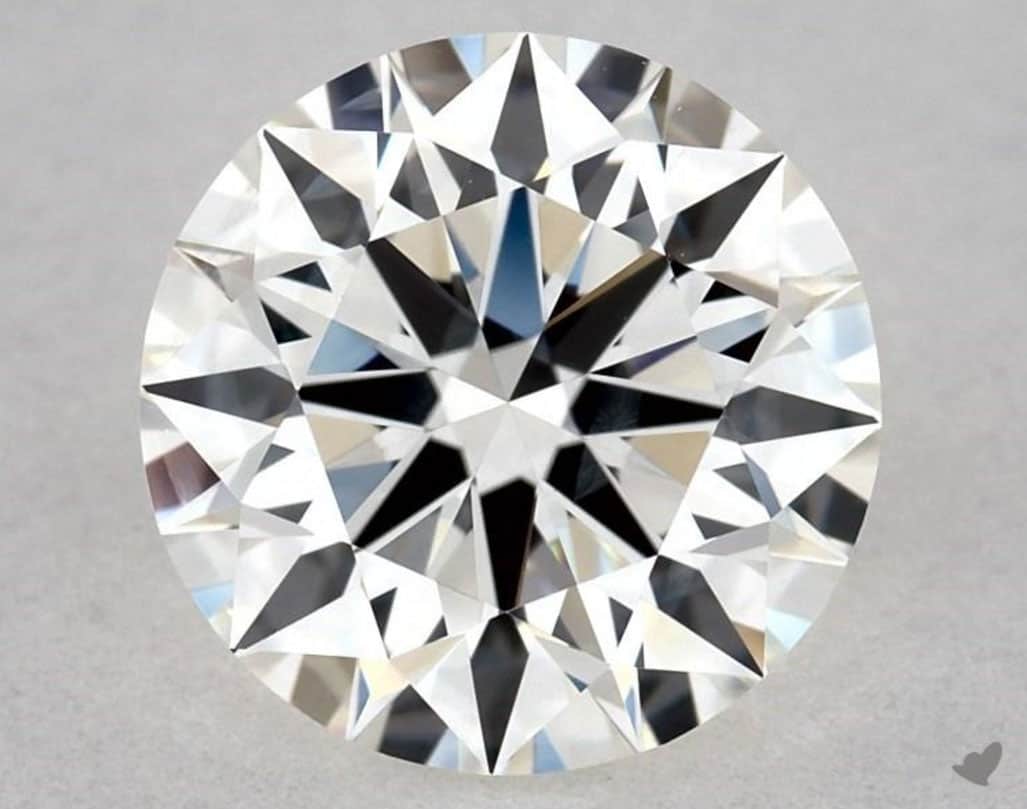
Inclusions can affect a diamond’s beauty, durability, and value. However, not all inclusions are visible to the unaided eye. The term “eye-clean” describes a diamond with inclusions that are not visible at an average viewing distance. The vast majority of SI diamonds will have an eye-clean appearance, yet, their flaws may affect the brilliance and sparkles. If you need help finding the right diamond and feel confident about your purchase, contact me, and let’s find it.
Clarity plots
A clarity plot is a diagram showing the inclusions’ location in a diamond. You can find it on most diamond certificates by respected grading labs such as the GIA, IGI, AGS, and GCAL. We can use it as a map, guiding us to see the inclusions within the diamond and the blemishes on the diamond’s surface. Each characteristic is marked with a unique sign, which allows us to precisely know the type of inclusion.
In general, for an eye-clean SI1 diamond, look for a clarity plot with inclusions near the surface and side facets, and none or very few inclusions in the center of the stone.

SI1 diamond clarity grade: Where it fits in
The most respected and well-known diamond grading lab entity is the GIA. It ranks the diamonds on a clarity scale ranging from best to worst. The scale goes like this;
| clarity grade | description | Example |
|---|---|---|
| Flawless (FL) | FL and IF are flawless diamonds with no inclusions or blemishes visible under 10x magnification. |
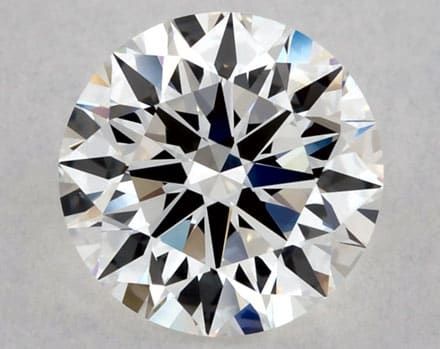 |
| Internally flawless (IF) | No inclusions are visible, but some small blemishes may be visible under 10x magnification |
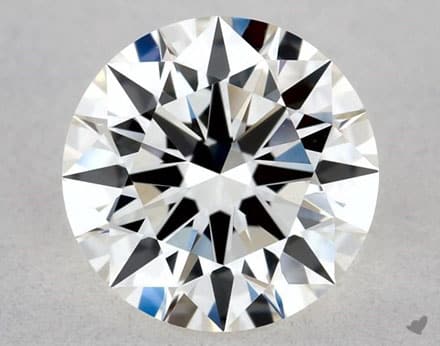 |
| Very-very small inclusions 1 (VVS1) | Inclusions are very difficult to see under 10x magnification even for trained eyes. |
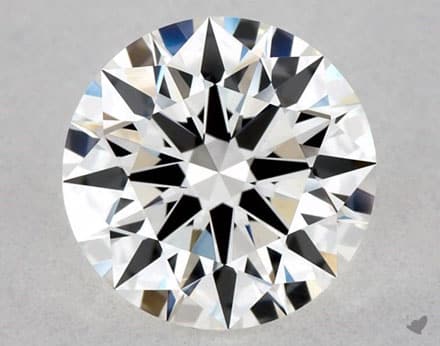 |
| Very-very small inclusions 2 (VVS2) | Inclusions are barley visible under 10x magnification, yet have slightly more inclusions than the VVS1 grade |
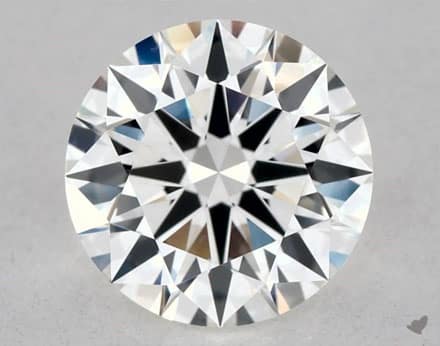 |
| Very small inclusions 1 (VS1) | Inclusions are minor and can't be seen without 10x magnification. |
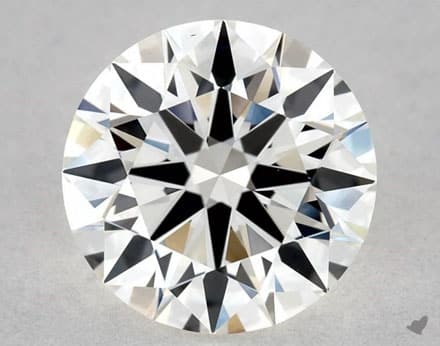 |
| Very small inclusions 2 (VS2) | Inclusions might be large enough in order to be easily noticeable under 10x magnification |
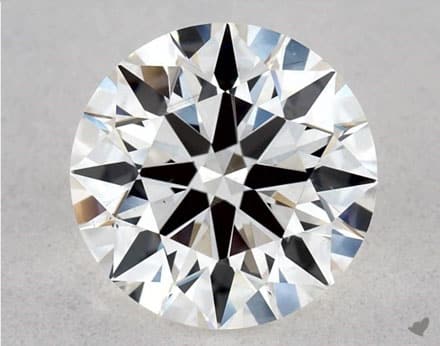 |
| Small inclusions 1 (SI1) | Inclusions are noticeable at 10x magnification and might be even seen by the naked eye |
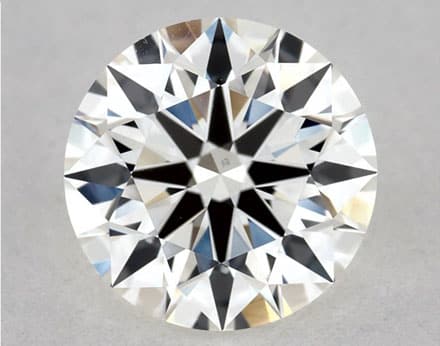 |
| Small inclusions 2 (SI2) | Inclusions are easily seen under 10x magnification and sometimes visible to the naked eye |
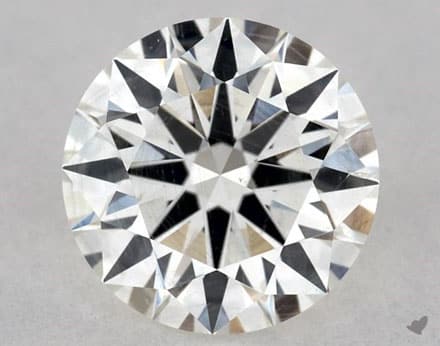 |
| Inclusions (I1, I2, I3) | Inclusions are obvious under 10x magnification and visible to the naked eye |
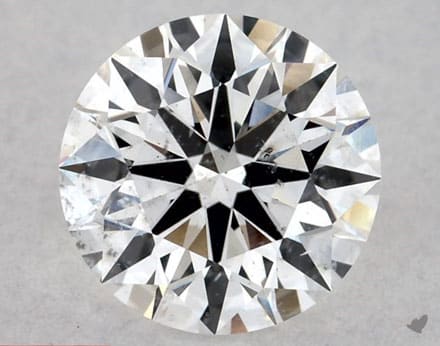 |
It may seem like getting a flawless diamond would be the ideal choice, but it isn’t reasonably necessary. This is because the inclusions in SI diamonds are not usually visible to the naked eye. Many people who purchase SI diamonds don’t even know their diamond has inclusions. That’s how small and unnoticeable they are. Some even argue that most SI diamonds can fall into the VS range. This is because most inclusions in SI diamonds are tiny and difficult to see. The vast majority of VS diamonds will be completely eye-clean. This means you cannot see the inclusions with the naked eye. Clarity grades are determined by the harshness and size of inclusion in the diamond. However, the grade does not determine whether the inclusions can be seen without the need for magnification.
SI1 vs. VS2 clarity
In many cases, finding an eye-clean SI diamond can bring an overall better value to your needs than VS diamonds. You can save some money or invest it in a larger diamond. VS2 simply means very slightly included, and SI means slightly included. Inclusions in a VS diamond will be very difficult to spot with the naked eye. At the same time, an SI stone might have visible inclusions. However, an SI stone is not necessarily a bad thing. Many people prefer SI1 stones because they are less expensive than VS stones yet offer great clarity.
Regarding price, SI1 natural diamonds are usually about 20-30% cheaper than VS diamonds. So, if you’re on a budget, SI1 stone is a great option. Just be sure to check for eye cleanliness before making your purchase.
VS2 clarity
How popular are SI1 diamonds?
Not many people outside the industry know this, but SI diamonds are the most popular in the market. They are less expensive than VS or VVS diamonds but have relatively good clarity. SI diamonds are an excellent choice for those who want a beautiful diamond without spending much money. The only time you might not want to choose an SI diamond is if you are looking specifically for a higher clarity grade. Over time, consumers have become more aware of the different types of clarity diamonds and the price differences. As a result, SI diamonds have become more popular than ever.
Searching for SI1 diamonds
Suppose you are looking for an SI diamond. In that case, you should know that most diamonds on the market fall into this category. With a little bit of searching, you should be able to find a suitable stone for you. Online vendors such as this one have over 500,000 diamonds available. With such a wide selection, you’ll probably be able to find the perfect SI diamond within your budget.
Pro tips for buying SI1 diamonds
When shopping for SI diamonds, there are several tips you can use to get value for your money. They include the following;
Avoid those inclusions
The following inclusions can affect the diamond’s beauty, cause problems in the future, or lower the light performance (less brilliance and sparkles). If you see one of them inside the comments section in the certificate, just skip to the next diamond:
- Cloud
- Feather
- Cavity
- Chip
- Indented natural
Focus on a good balance between all factors
Getting an SI1 diamond is a common practice to get a higher carat weight. However, make sure the diamond looks eye-clean and shows good sparkles. Since there is no point in getting a diamond that looks dull, compromise a little over carat weight if needed. For example, you might try to hit the 1.00 carat mark, but the diamonds available within your budget don’t look that nice. In that case, look for a 0.9-0.99 carat diamond that looks overall beautiful.
Inspect the diamond closely
Doing this is very important because it will help you determine the diamond’s clarity. If there are any inclusions, they should be small and not easily visible. If you notice imperfections, then that would mean it is not eye-clean. That will lower the value of the stone. Also, make sure the diamond show brilliance and sparkles under natural light. If not, simply move to the next one.
Hide the flaws
Try to find an SI1 with inclusions over the facets of the diamond. Your significant other would never know they exist! You can ask the jeweler to hide them under the setting prongs.
Flaws over the facets
Hiding the flaws under the setting prongs
Look at the clarity plot on the GIA certificate.
Check which inclusions and blemishes the diamond have in the comments section. Compare it with the clarity plot and see where the flaws are located. Use the plot as a map that guides you, and try to find the flaws again by using a diamond loupe. If they are hidden well and don’t affect the diamond’s beauty, it might be a good diamond.
Know your shape
Some shapes are more popular than others, which can increase the price. If you want a classic round brilliant cut, you may have to spend more than you would on a less popular shape like an emerald cut.
Get a reliable certificate
The GIA and AGS are the world’s two most reliable and respected diamond grading organizations. If you’re buying an SI clarity diamond, make sure it comes with a certificate from either of these organizations.
Don't get SI if you go BIG
If you plan on getting a 2.00 carat and larger, I’d strongly recommend getting a VS2 minimum. Keep in mind that the size of the SI1 inclusion is relative to the size of the diamond. As the diamond gets larger, the inclusion gets larger. It makes it much more noticeable to the naked eye.
SI1 diamonds live market research
Best value of SI1 clarity diamonds
There are a few scenarios where SI1 clarity diamonds will give you the best value. Here they are;
The Round shaped: A round shape will give the stone a better value. The difference in price between SI clarity and VS clarity is not as significant as in other shapes.
Oval, Pear & Marquise Cut diamonds: In these shapes, an SI clarity grade will cost you less than a VS clarity grade with the same carat weight, color, and cut.
Heart-Shaped: Go for a VS2 or SI1 clarity grade. A VS1 clarity grade will cost you about 20-25% more than an SI clarity grade.
Baguettes, Emerald Cuts, and Asscher Cuts: They don’t conceal inclusions like brilliant-cut diamonds. So, if you’re looking at these shapes, I recommend going for a VS clarity grade or better.
Conclusion
Now that you know all about SI clarity diamonds, you can make an informed decision when shopping for your next diamond. Keep in mind that the “best value” is a relative term. It all depends on your budget and what’s important to you.
People also ask:
The diamond 4c’s: Carat, cut, color and clarity explained
What’s the right carat weight for your budget?
How to pick the right diamond color for your engagement ring?
What’s diamond clarity? Which one is right for you?
How to pick the best cut for your diamond?
What’s diamond fluorescence and how does it affect the overall appearance and price of a diamond?
What’s the difference between diamond cut and diamond shape?





















